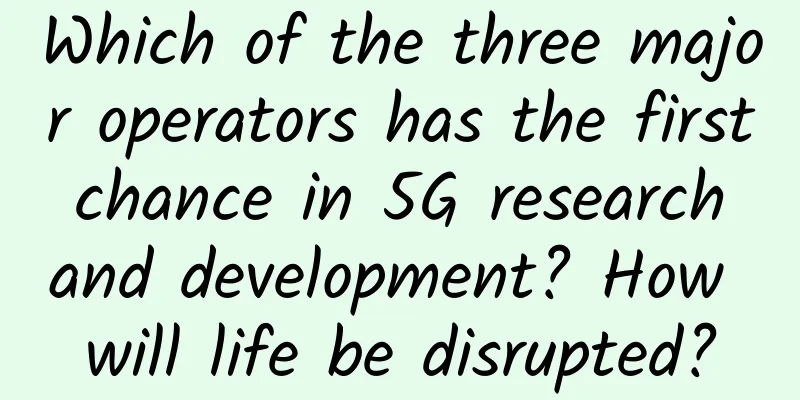Highlights | Speech content of the 39th GTI seminar (2/2)

|
Previous: Highlights | Contents of the 39th GTI Seminar (1/2) On February 24-25, the 39th GTI seminar was held in Barcelona, Spain. Senior executives and experts from international organizations such as GSMA, 5G-ACIA, NGMN, ITRI, China Mobile, Vodafone, France Telecom, Telefonica, Softbank, NTT DOCOMO, Korea Telecom, SKT, Turkey Mobile, Turk Telecom, YTL and other international operators and industries attended the meeting to discuss the key technologies and innovative applications for the development of the mobile information industry. In this article: 5G Industry Network Solution (ENS)This conference focused on green, lightweight, performance-enhanced and capability-integrated 5G-A key technologies and solutions to promote the digital transformation of the industry. It discussed in depth 5G-A innovative technologies and application cases such as passive IoT, 5G deterministic communications, and telepathy . It shared low-cost and lightweight 5G intelligent private network deployment solutions to help 5G-A technology be applied on a large scale in vertical industries. 5G ENS Working Group ReportIn the 2023 5G ENS Work Summary Report, the GTI 5G ENS Coordinator introduced the main achievements and highlights of the year and proposed a work plan for 2024. The 5G ENS Working Group is committed to promoting the digital transformation and development of vertical industries around the world, and working with global partners to carry out demand tracking, technological innovation, product development and application promotion. In 2023, the 5G ENS Working Group focused on the research of 5G-A key technologies and solutions such as green lightweight, performance improvement, and capability integration . From the three levels of demand, technology, and application, it summarized the highlights and achievements in the fields of passive Internet of Things, 5G intelligent and simple private network, 5G deterministic communication, intersensory integration, and inter-computing intelligence integration . Looking forward to 2024, the GTI 5G ENS Working Group will continue to work closely with partners to promote the standardization and industrialization of 5G enterprise network solutions and provide support for global industrial digital upgrades. The Industrial OpportunityThe project leader from GSMA introduced the industrial opportunities forged by GSMA. GSMA Foundry focuses on creating business opportunities for the mobile industry. According to economic reports, the mobile industry's contribution to global GDP will increase from US$5.2 trillion to US$6.0 trillion in the next 5 to 8 years. Enterprise solutions are becoming an important part of mobile operators' revenue, creating new revenue opportunities by building solutions such as financial services, private networks and immersive products for consumers and enterprises. GSMA focuses on industry solutions such as digital industries, fintech and smart travel, and is committed to building a global digital community of industrial enterprises, network operators and a wider ecosystem. Driving transformation through 5G and related technologies, establishing new relationships with a wider ecosystem, and bringing new development opportunities to the mobile industry. Application cases and industry needs for 5G+Industrial InternetIn order to meet the needs of 5G+Industrial Internet scenarios, promote the integration of ICT and OT technologies, and accelerate the application of 5G technologies in the industry, 5G-ACIA introduced the thinking of 5G scenarios and needs for industrial interconnection and automation, as well as the outlook for future 6G scenarios. Globally, OT and ICT manufacturers are committed to promoting the large-scale application of 5G technology in vertical industries and fully unleashing the value of 5G in the digital transformation of vertical industries. The report shares key enabling technologies such as 5G+OPC UA, as well as application cases of scenarios such as smart factories and smart parks, and puts forward thoughts on the application scenarios and potential development directions of 6G in the future. In order to accelerate the application of 5G, Internet of Things, artificial intelligence and other technologies in the industry, 5G-ACIA is willing to work closely with GTI and existing and future industry partners to accelerate the digital transformation and development of the industry through ICT+OT integrated technology innovation. Accelerate 5G-A Passive IoT innovation and explore new growth space for IoTHuawei introduced the innovative achievements and latest industrial progress of 5G-A passive IoT. 5G-A Passive IoT realizes the first introduction of passive IoT into cellular networks, and IoT information is available throughout the entire network. The new passive IoT technology fully utilizes the capabilities of cellular technology and has four major advantages over RFID: long coverage, accurate inventory, networking, and wide range of scenarios. Huawei has fully verified the digitalization of production logistics and smart warehousing in smart manufacturing with industry partners, including verifying Passive IoT tracking material flow in washing machine manufacturing plants with China Mobile, and tracking and managing the status of pledged steel coils in movable mortgage warehouses with China Unicom and Ouye Metallurgical Services. The Passive IoT industry ecosystem is accelerating, and standardization work is progressing steadily. Passive IoT will inspire the intelligent connection of all things, expand new boundaries of wireless communication services, and help the digital transformation and development of society. Passive IoT: A new approach to the physical worldOPPO first introduced the technical positioning and design goals of the Ambient Energy Internet of Things, then introduced the standardization progress of the Ambient Energy Internet of Things, and predicted the network capabilities that the Ambient Energy Internet of Things, which will be standardized in 3GPP Rel-19, can provide. Furthermore, based on standardization discussions and industry research, the most likely application scenarios and technical requirements of the Ambient Energy Internet of Things were given. Finally, OPPO's contributions and achievements in technical research and standardization of the Ambient Energy Internet of Things in recent years were introduced. One BBU board can build a B2B private network within one hourZTE introduced that as 5G networks are rolled out around the world, many operators and enterprises have begun to explore B2B applications of 5G networks. However, the high construction cost and difficulty of traditional private network projects have excluded many customers who originally had a strong desire for 5G private networks. ZTE has seen such market demand and launched the base station-level NodeEngine private network solution to solve the high threshold problem of 5G private networks. As ZTE's first base station-level computing power private network solution, NodeEngine only needs to place a computing power board in the BBU to provide local traffic diversion and serialized private network value-added services for enterprises at the edge of the network, such as parks, schools, and ports, and provide business support for park automation, intelligent security, and remote control. Its advantages are mainly reflected in five aspects: plug-and-play, multi-base station sharing to achieve local traffic diversion, multiple means to ensure the security and reliability of the private network, 5G wireless brain, and support for enterprise user IDOS self-service functions . Flexible, lightweight and scalable 5G networks for industryComba Networks introduced a lightweight 5G end-to-end private network solution , which includes industry terminals, indoor pico base stations, outdoor high-power base stations, industry private network base stations, 5G smart gateways, microwave point-to-multipoint transmission systems, lightweight core networks and network management systems. It is a 5G+ industry basic network overall solution that integrates key features such as 5G determinism, flexibility, openness, lightweight, cloud-network integration, and ubiquitous Internet of Things . It is a "one-stop" intelligent 5G application bearer solution with the value advantages of flexibility and ease of use, capacity flexibility, data security, compactness and practicality, open capabilities, economic and efficient, easy to expand, and integrated networking to achieve a fully connected network, helping the industry to more efficiently realize digitalization and intelligence. Evolution of Deterministic Communication Technology and Typical ScenariosEricsson introduced the development and evolution of deterministic networks, as well as thoughts on future development trends. Deterministic communication originated from the application field of industrial automation. Due to the inconsistency of technology and market, traditional industrial buses and industrial Ethernet have led to incompatible market applications, small network connection scale, and complex communication, which makes it difficult to meet the requirements of fully connected edge computing and artificial intelligence proposed by Industry 4.0. Therefore, TSN standards for fixed networks and DETNET standards adapted to IP networks have emerged one after another. With the emergence of industrial flexible production needs, the limitations of fixed networks have become prominent, which has given rise to the demand for 5G TSN and DETNET. The expert further introduced the main features of 5G integration of TSN and DETNET in the 3GPP standard, and focused on the ideas for solving the problem of random packet delay. Finally, the expert introduced the current industry's thinking on the problem of random changes in deterministic communication, mainly including the transition from deterministic to reliable communication, and providing reliable communication for time-sensitive services, such as establishing a collaborative mechanism between networks and applications, and ensuring the reliability of communication by monitoring and predicting network capabilities. Research on these issues has begun in the DETERMINISTIC6G project in the EU 6G research project. 5G Deterministic Communications Promotes Industry 4.0Spreadtrum introduced that with the accelerated evolution of 5G technology , its deterministic communication characteristics have brought unprecedented opportunities for the development of modern industrial intelligence. Against the background of increasingly clear vertical industry demand for 5G networks, traditional Ethernet data transmission methods have been unable to meet the stringent requirements of emerging businesses for end-to-end latency, jitter and reliability. Therefore, it has become an urgent need for the industry to establish a new generation of networks that can provide "punctual and accurate" data transmission services. The new technical features of 5G help reduce latency, and in certain cases, the latency can be significantly reduced from 20ms to 8ms, providing a solid network foundation for applications with extremely high requirements for real-time control and interactivity, such as remote surgery, autonomous driving and industrial automation; in terms of reliability, through technological innovation and optimization, it is helpful to increase network reliability from 99.9% to 99.999%. This improvement means that the risk of network interruption is greatly reduced in mission-critical applications; high-precision timing technology provides more accurate time synchronization for the Internet of Things, smart manufacturing and other fields; 5G TSN introduces time-sensitive networks into 5G networks, providing real-time and reliable communication solutions for industrial automation and smart manufacturing; 5G LAN ensures data security and controllability by building a dedicated local area network, meeting the needs of various industries for network security and data security; in the Sub-6GHz frequency band, by optimizing signal transmission and reception technology, it is beneficial to achieve a breakthrough in uplink gigabit speed. 5G focuses on enabling support for vertical industries, promoting the digital transformation of thousands of industries, and truly improving the efficiency of industry development. ISAC 3GPP Standards Evolution and Use CasesXiaomi elaborated on the basic concept of ISAC, which is the ability to achieve data communication and environmental perception on the same wireless interface. This innovative technology is seen as the key to the future smart connected world and a potential killer application for 6G. Xiaomi demonstrated the application cases of ISAC in smart home, smart factory, smart transportation, smart driving, etc. At the same time, Xiaomi also introduced the latest progress of ISAC in 3GPP standardization, which marks the increasing importance of ISAC technology in the global communications industry. Xiaomi further elaborated on the evolution of ISAC technology from 5G-A to 6G, emphasizing that ISAC, as a core component of future network evolution, will play an important role in improving network efficiency and expanding new services for operators. In addition, Xiaomi also shared the recently released "People, Cars, and Homes" strategy, which is to fully connect the three major scenarios of people, cars, and homes through the Pengpai OS ecological operating system, realize the seamless connection and real-time collaboration of hardware devices, and the possible application of ISAC technology in the scenarios of people, cars, and homes. Xiaomi's speech not only demonstrated the company's deep technical accumulation in the field of ISAC, but also demonstrated Xiaomi's firm commitment to promoting the integration of communication technology and perception technology and playing a leading role in the upcoming 6G era. Evolution of positioning and sensing technologies for 5G and beyondNokia Bell Labs gave a keynote speech on "Positioning and Perception Technology for 5G and the Future", introducing the latest progress in high-precision positioning technology for indoor and campus use, and separately analyzing the two technologies of AI/ML-based positioning and Carrier-Phase positioning. It then gave a comprehensive explanation of the efficient design of integrated synaesthesia, extensive measurement of channel modeling, radio-aware digital twins, new interface requirements and corresponding algorithm innovations , and demonstrated Nokia's latest practical achievements in this field. ISAC Research and Prototype Development Progressvivo introduced the latest progress of technical research and prototype verification of synaesthesia integration. Synaesthesia integration is one of the 6G scenarios defined by ITU, and is also an important scenario for 5.5G. The simulation results provided by vivo show that compared with base station perception, terminal-participated perception can improve the performance of perception in weak coverage areas, which is a beneficial supplement to base station perception. vivo also sorted out the key technologies of synaesthesia integration, including: waveform and signal design, multi-band collaborative perception, multi-antenna synaesthesia integration technology, multi-point collaborative perception, perception link adaptation technology, synaesthesia integration mobility management, perception non-ideal factor elimination technology, perception security and privacy protection scheme, etc. In addition, vivo's synaesthesia channel measurement and synaesthesia prototype verification were introduced. The three prototypes include base station self-transmitting and self-receiving perception prototype, base station transmitting and terminal receiving perception prototype, and base station transmitting and multi-terminal receiving collaborative perception prototype. The verified use case scenarios include breathing monitoring, target speed and distance measurement, and trajectory tracking, which has made pioneering explorations on the integration of synaesthesia combined with practical applications. White Paper Release◆ "White Paper on Typical Scenarios of Passive Internet of Things" In order to promote the digitalization of the industry and realize full-factor visualization, full-process automation, and full-lifecycle intelligence, China Mobile Research Institute and industry partners jointly released the "White Paper on Typical Scenarios of Passive Internet of Things". The white paper focuses on typical application scenarios of passive Internet of Things. According to the characteristics and capability requirements of the entire life cycle of the identification object, the scenarios are divided into three categories: regional inventory, wide-area tracking, and global management. Regional inventory is mainly based on the needs of local item inventory and search, including large-scale warehouse management, office asset management, industry equipment monitoring, and household item management. Passive Internet of Things supports indoor and outdoor continuous coverage, precise positioning, intelligent information identification, and automatic information collection. It can realize efficient warehouse inventory and management, massive asset automation management, intelligent inspection, and rapid positioning services. Wide-area tracking is oriented to wide-area open environments, and is mainly based on the needs of positioning and tracking identification objects with strong mobility and irregular movement, including scenarios such as personnel and item tracking, traffic vehicle supervision, and current asset management. Through wide-area coverage, it is possible to achieve rapid positioning and tracking of personnel and items, improve road traffic management efficiency, and meet the management needs of municipal high-value and volatile current assets. Global management covers both local and wide-area environments, and is mainly focused on end-to-end full-process management and information traceability, including production process management, express logistics management, cold chain goods management, and commodity supply chain management. Through medium- and long-distance transmission and large-scale coverage, services such as transparency of material information throughout the life cycle, full-process logistics tracking, and supply chain traceability can be achieved. ◆ "White Paper on 5G Endogenous Deterministic Technology for New Industrialization" China Mobile Research Institute and industry partners jointly released the "White Paper on 5G Endogenous Determinism Technology for New Industrialization". The white paper analyzes the development trend of 5G-enabled digital factories, focuses on the demand scenarios of 5G determinism, and explains the core concepts of 5G endogenous determinism: "endogenous supply of deterministic capabilities, ultimate performance services, and reliable global guarantees", as well as a technical system covering three categories and 12 innovative capabilities. It also demonstrates its application and practice in digital factories, and looks forward to the advancement of lightweight determinism, hoping to provide new ideas and directions for the integration of technological innovation and industrial development in 5G-enabled digital factories. |
<<: Highlights | Speech content of the 39th GTI seminar (1/2)
>>: How O-band technology can help overcome implementation barriers from 5G to 6G
Recommend
Hostodo: $19.99/year KVM-1GB/12GB/4TB/Las Vegas
Hostodo has released several promotional packages...
Analysis of the advantages and disadvantages of the six categories of wireless connection technologies for the Internet of Things
IoT applications have penetrated into our lives, ...
Summary information: Casbay/Eurasia Cloud/ZgoCloud/Asia Cloud/Nai Cloud
This week I will continue to share some host info...
Digital-vm is 40% off in June, KVM VPS monthly payment starts from $2.4, 1-10Gbps bandwidth, 8 data centers in the United States/Japan/Singapore
Digital-vm has released a 40% discount code that ...
5G lacks "soul"? Advanced technology is coming
Judging from the current situation, 5.5G technolo...
IPv6 just increases the number of addresses? In fact, the truth is not that simple!
On October 20, at the 6th World Internet Conferen...
Hosteons: Free upgrade to 10Gbps ports in Los Angeles/New York/Dallas, KVM annual payment starts at $21
In January this year, Hosteons began to provide 1...
AI and blockchain: What kind of sparks will the collision of these two popular technologies create?
Editor's note: Blockchain and AI are the two ...
Linux Network Monitoring Tools
Network communication is one of the most basic fu...
ShockHosting Japanese data center VPS simple test
On the 11th of this month, ShockHosting sent an e...
Simplifying enterprise operations and maintenance: the right network automation strategy is key
[51CTO.com original article] From the development...
2022 Gartner Online Fraud Market Guide Report is officially released, Ruishu Information is once again selected as a representative manufacturer
In December 2022, Gartner®, a global authoritativ...
From 0G to 5G, the ups and downs of mobile communications over the past century
During World War II, Motorola's SCR series wa...
List of the most common Internet SIM cards: Choose the right one and save a lot of money
At present, many Internet companies have joined h...
Simple test of HostYun Australian data center AMD series VPS
Earlier this month, the blog shared information a...









